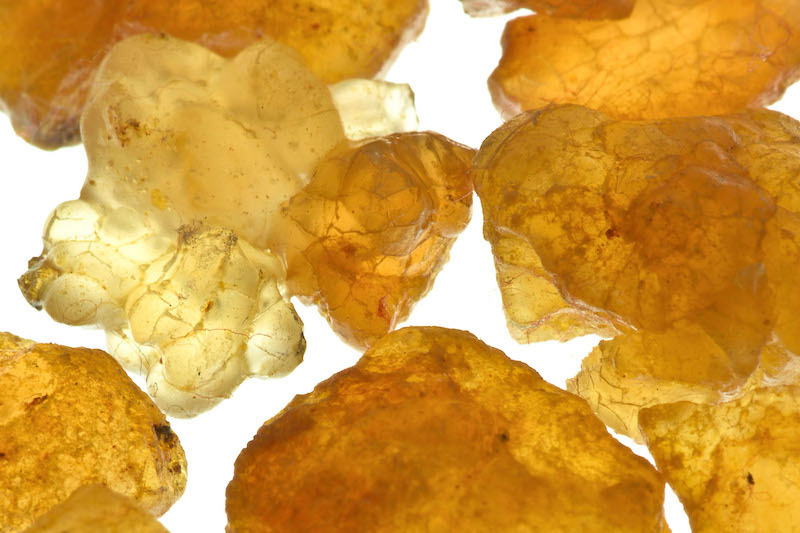Myrrh is native to Somalia, Ethiopia, Kenya, Saudi Arabia and Oman.1 In the earliest history of trade, the herb was an “offering of value,” as it is often mentioned in the Bible.8 The first recorded effort of domestication of Myrrh occurred in 1495 when Queen Hatshepsut of Egypt sent an expedition to Somalia to bring back trees that produced fragrant resin.1 It is said that 31 trees were brought back in wicker baskets slung on poles, then planted in the Garden of Thebes.1
The name Myrrh denotes “bitter” and is most likely of Arabic origin.8 The herb was one used in combination for embalming of Egyptian nobles and pharaohs.7
Myrrh is also used in Kyphi, a sweet, spicy and resinous incense that has been used since ancient Greece.4 The ingredients include raisins, wine, honey, mineral pitch, Myrrh, Lemongrass, Sweet Flag, Cyperus tuber, Saffron, Spikenard, Rosewood, Cardamom, and Cinnamon.4
The plant is valued in the landscape for its ability to prevent soil erosion caused by wind, and is often found flourishing in shallow soil, most often over limestone deposits.1 Myrrh is commonly found in bushland habitats among native flora and fauna and in desert scrubland thickets.1,6 In the forests on the shores of the Red Sea, the shrub was known to create an undergrowth.8 It prefers full sun, high temperatures, dry to moist soil, and is drought tolerant.6
The Myrrh oleo-gum-resin naturally oozes from the tree and hardens on the bark in sizes ranging from a pea to a large walnut.9 The irregular pieces were said to resemble the tree’s “tears,” which is now the commonly referred to plant part description.9 To collect the fragrant tears, trees are scored in several places on their main trunk or cut branches.2,6 These scores in the bark begin to produce a milky resin that hardens into an amber/reddish-brown tear as it begins to dry on the tree.2 After about two weeks, the tears are ready for collection and dried.2,6 If collected properly, this procedure does not harm the tree, and therefore doesn’t threaten the sustainability of Myrrh.2 A number of species produce chemically similar oleo-gum-resin and share the same uses in herbalism.






























